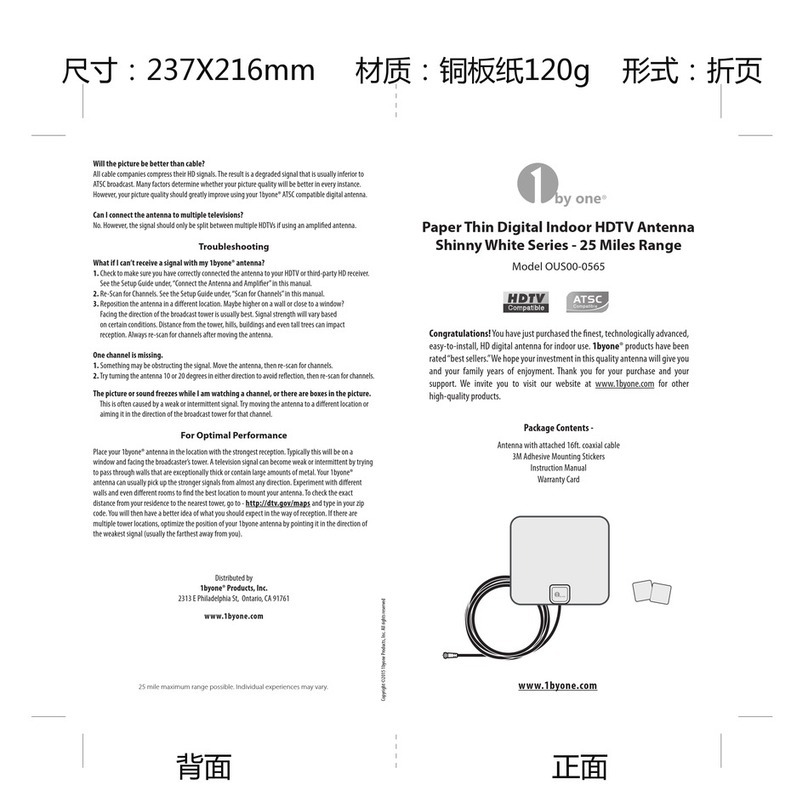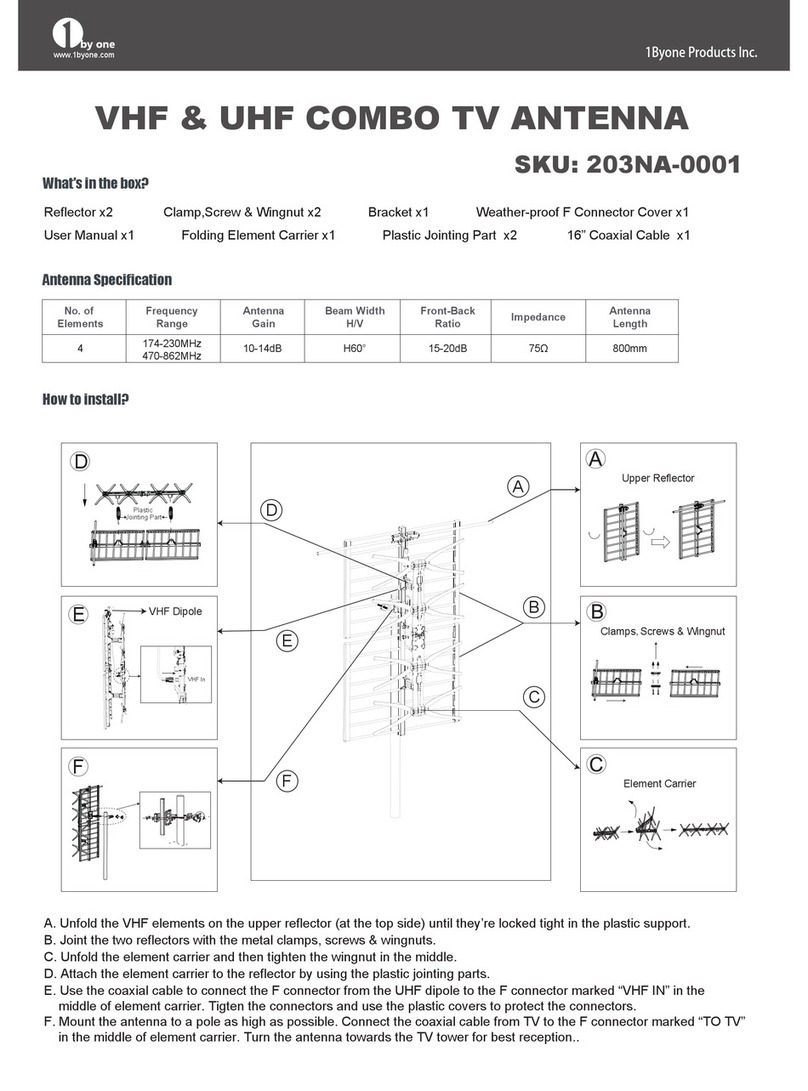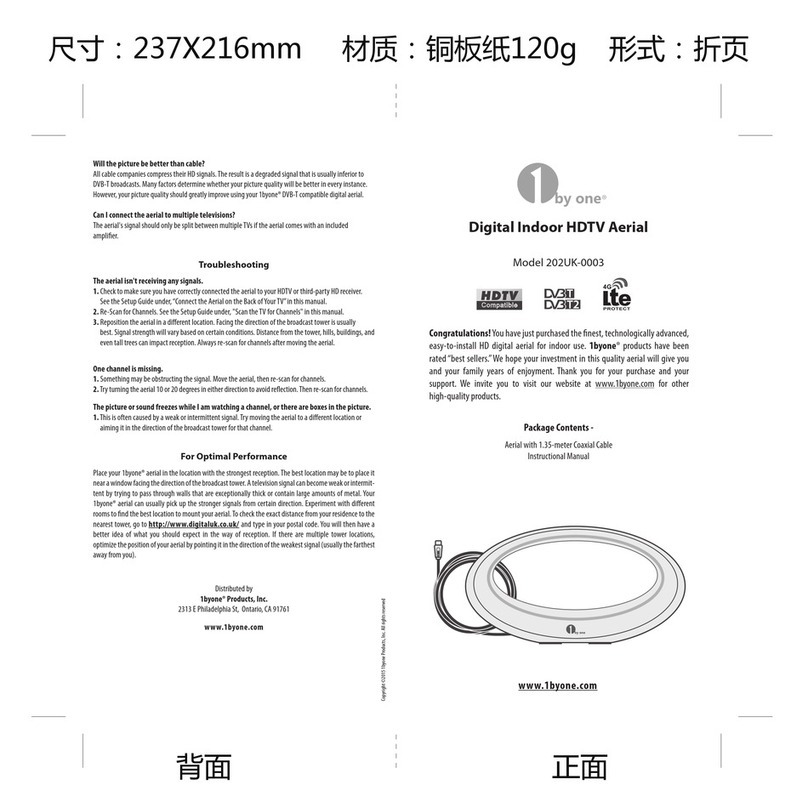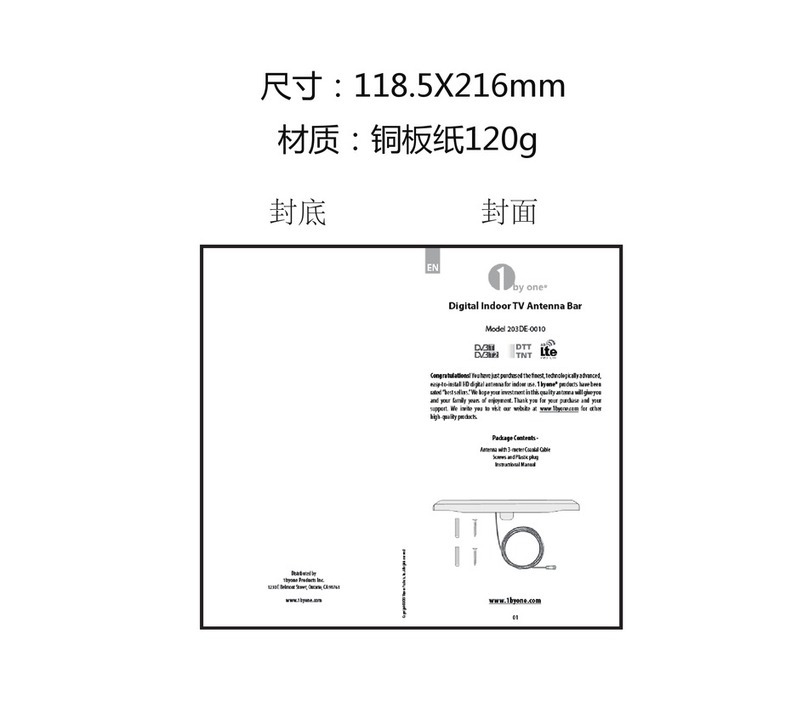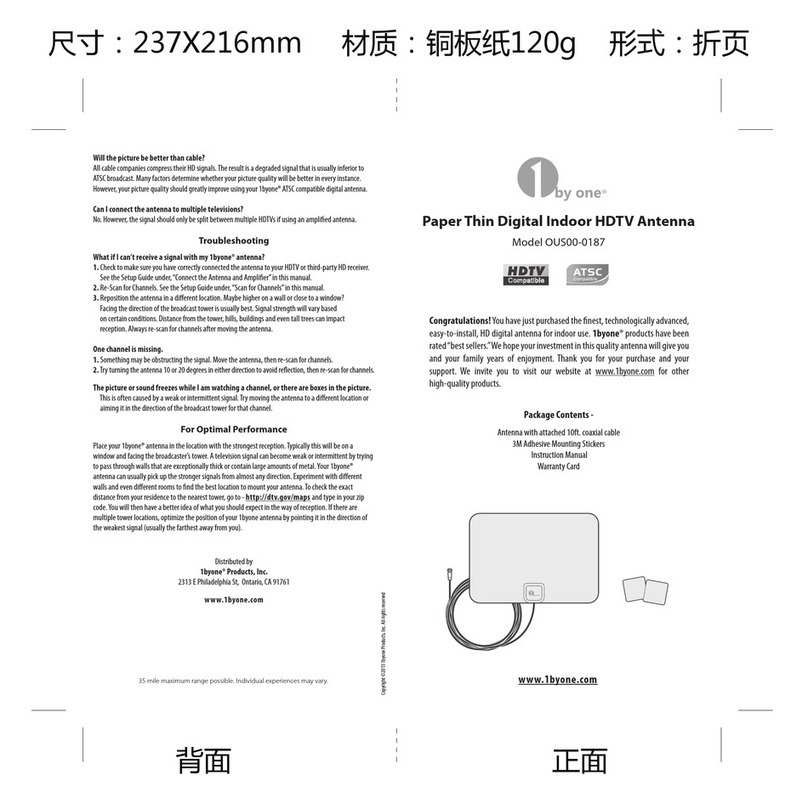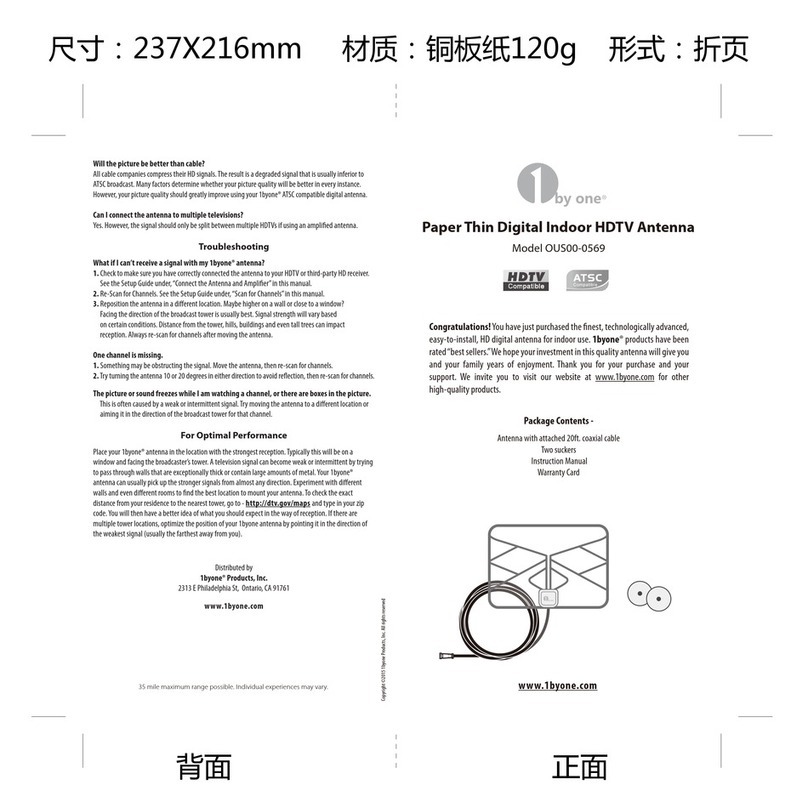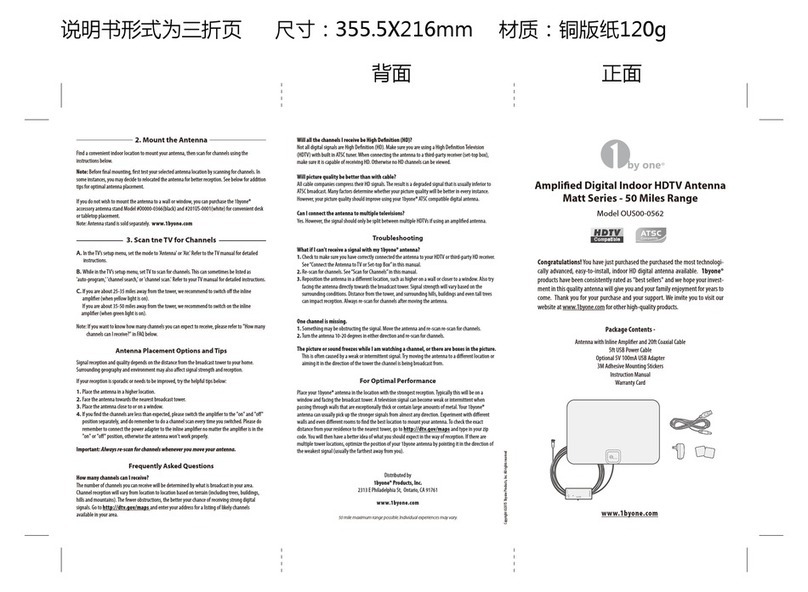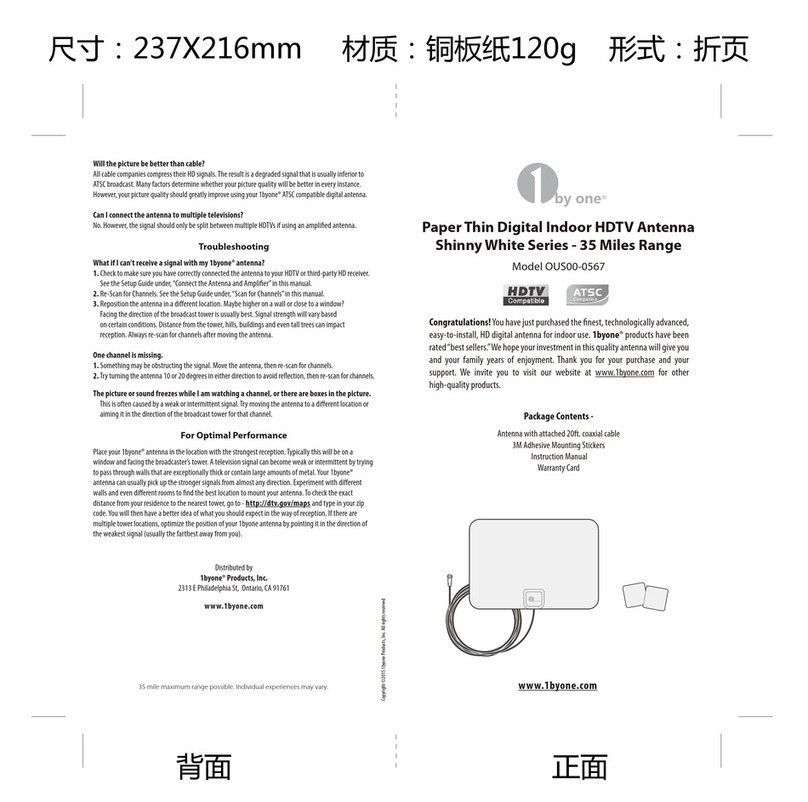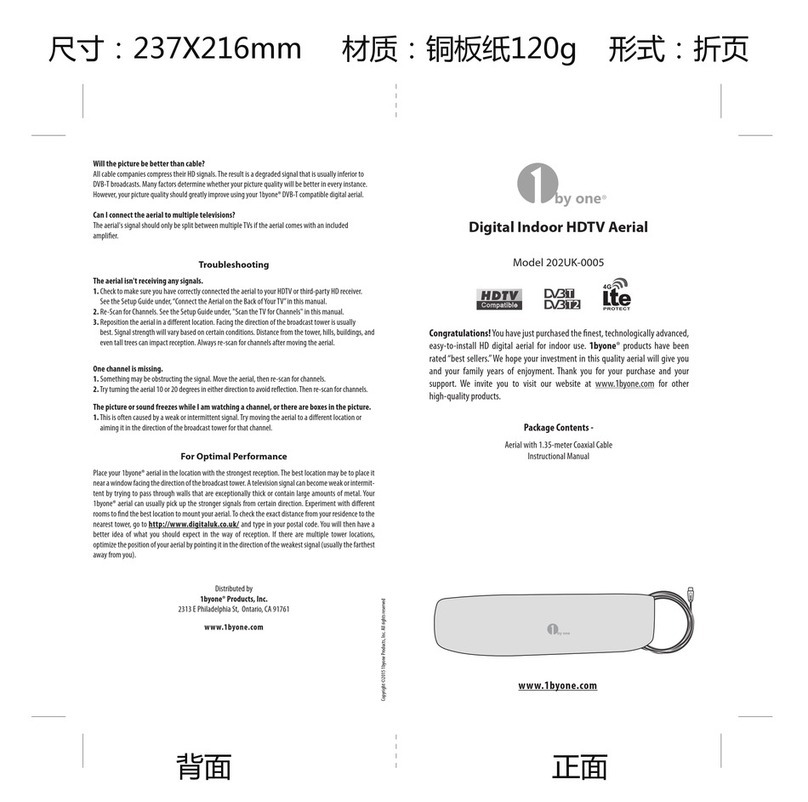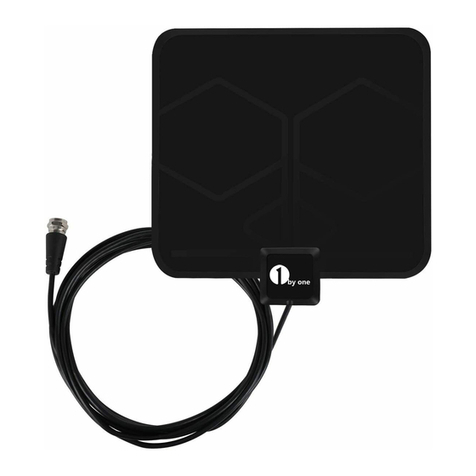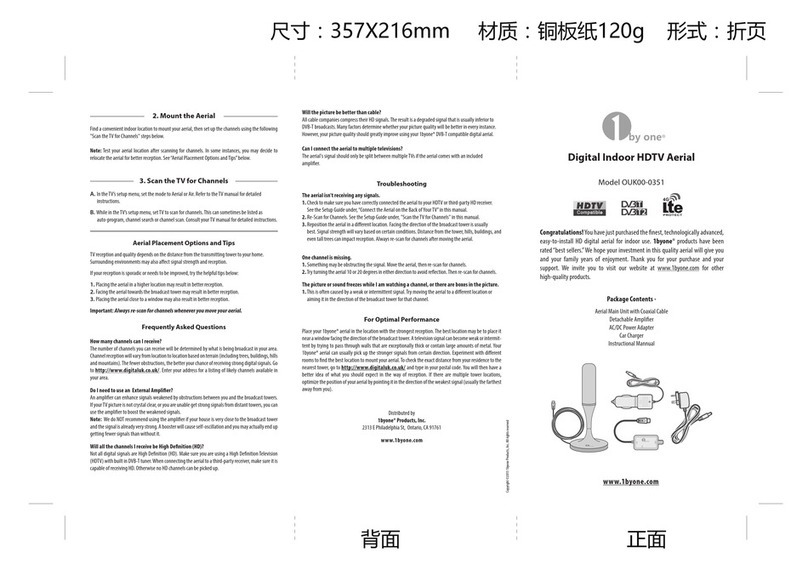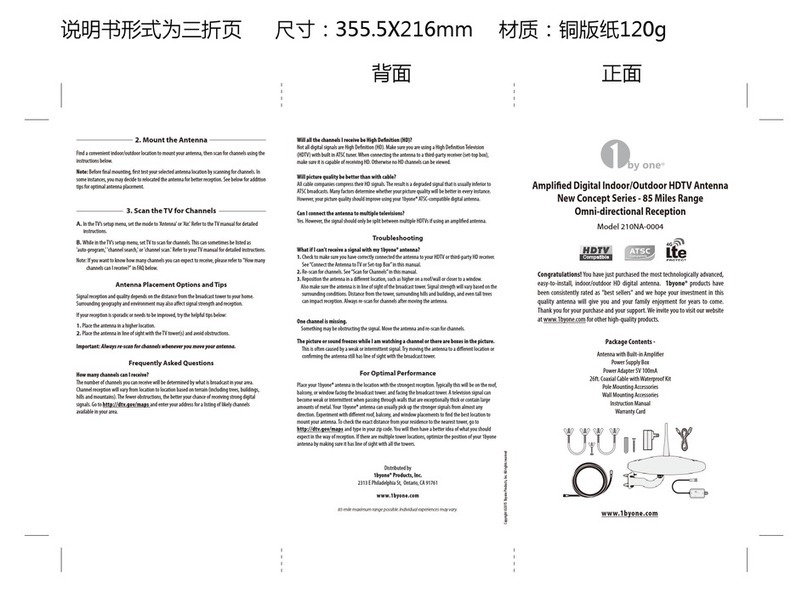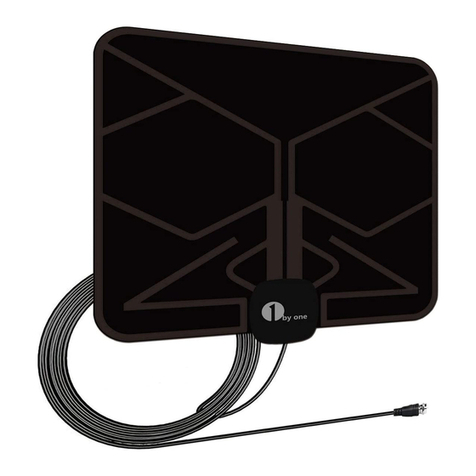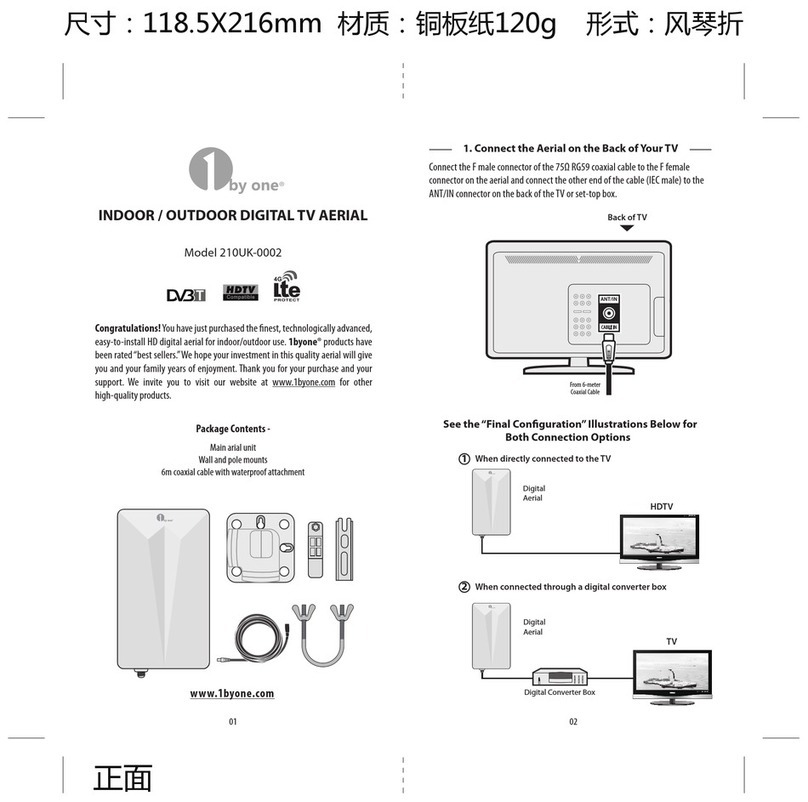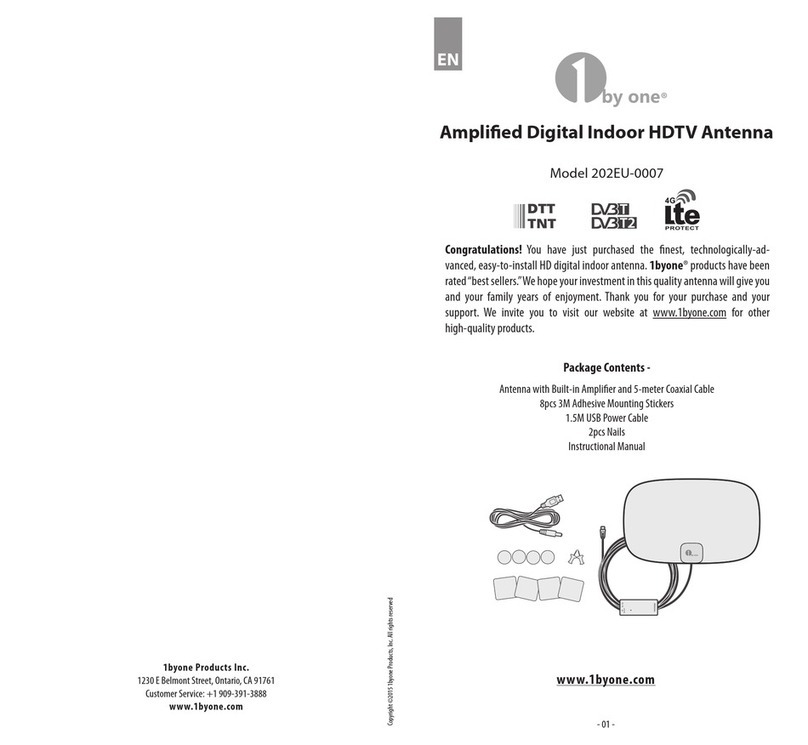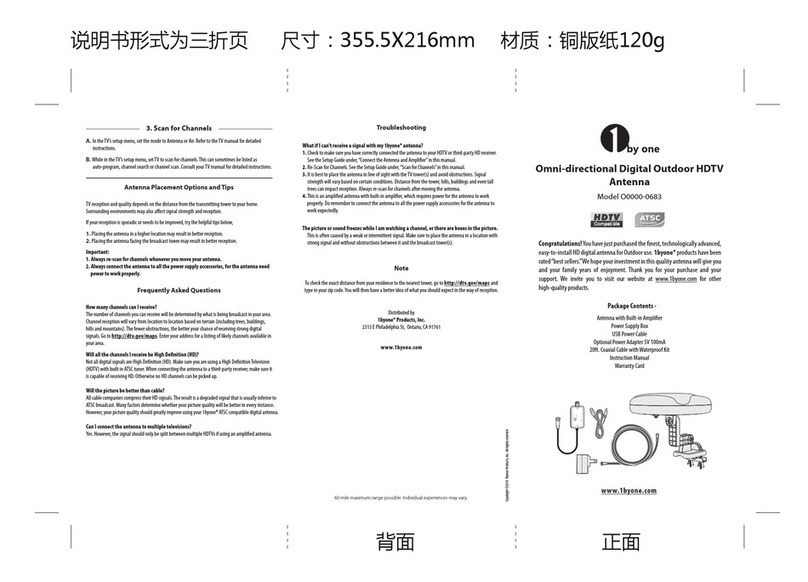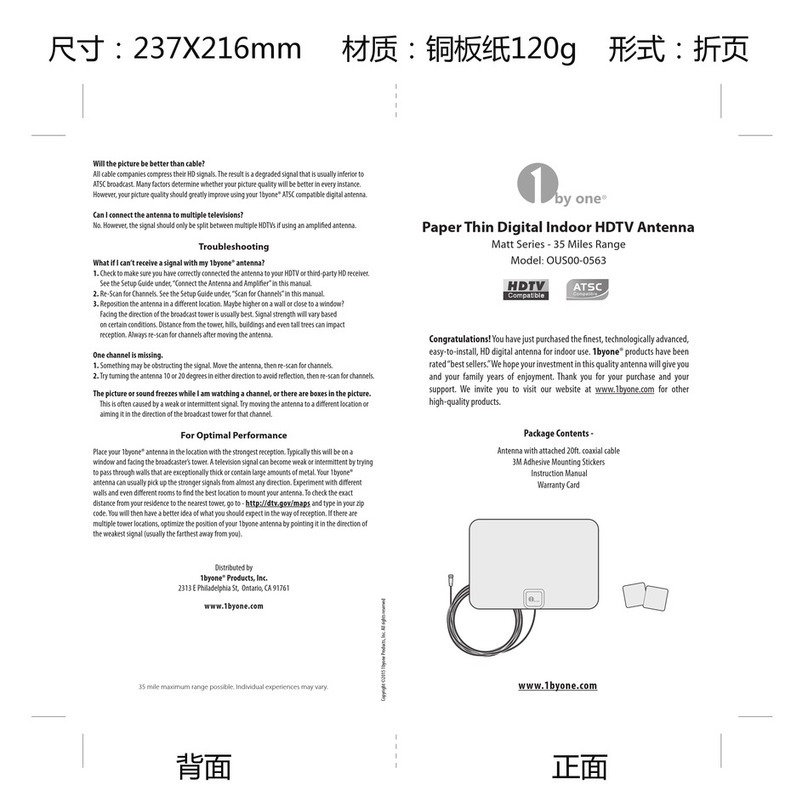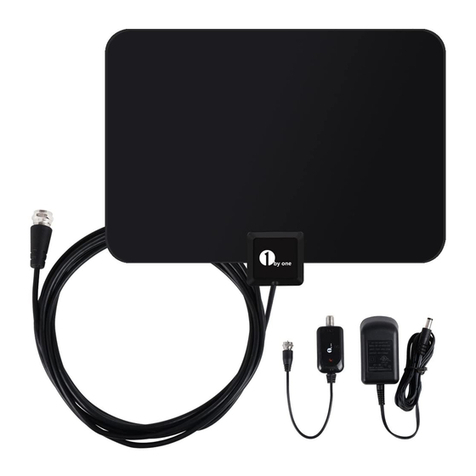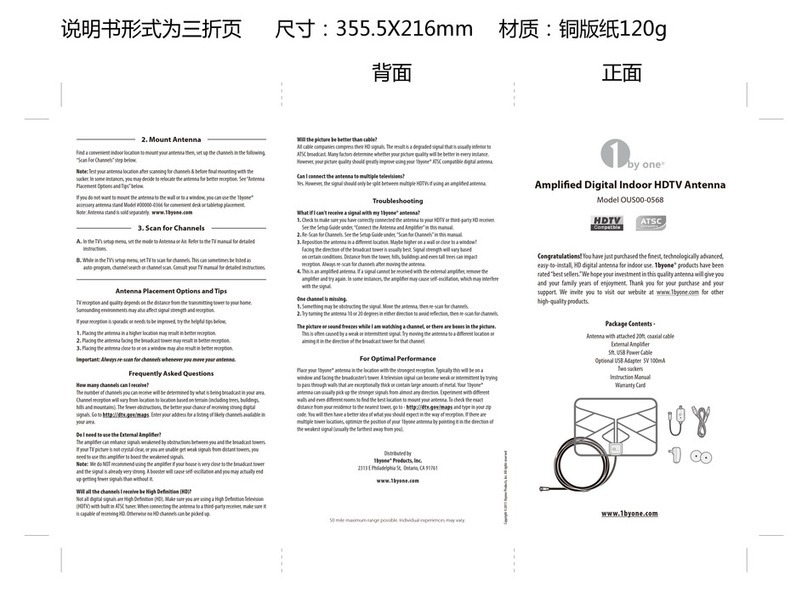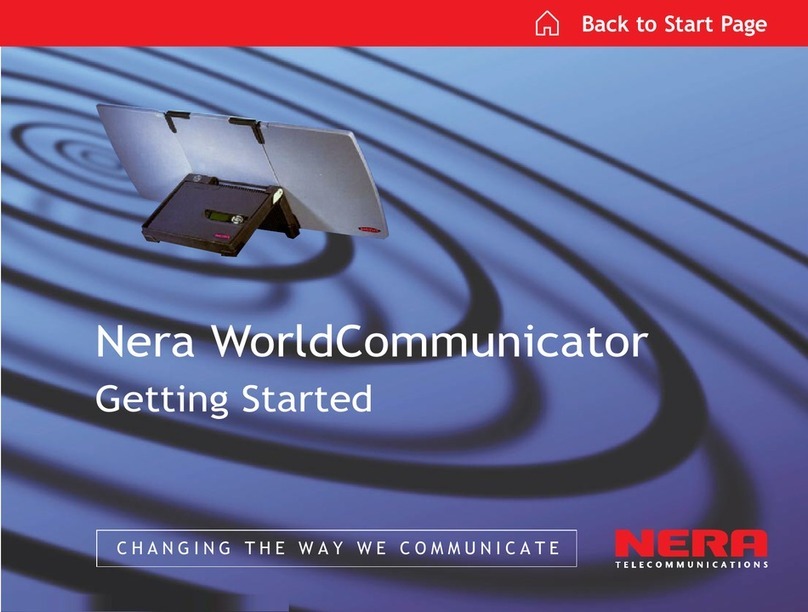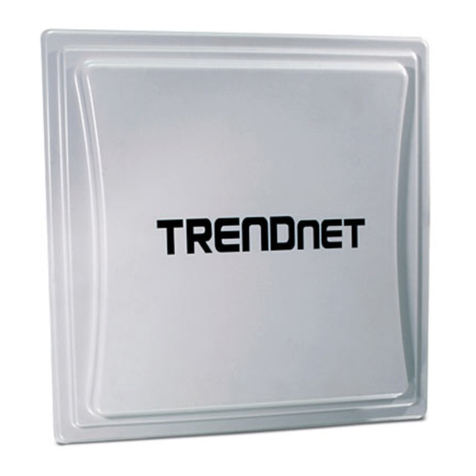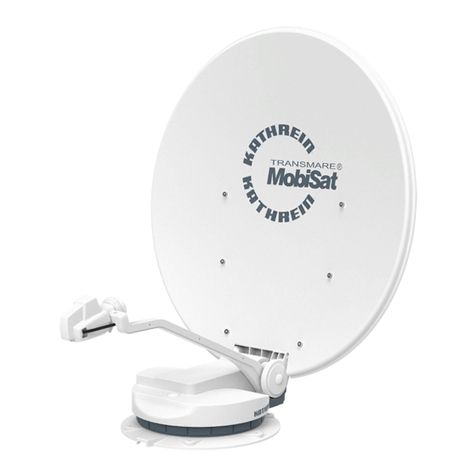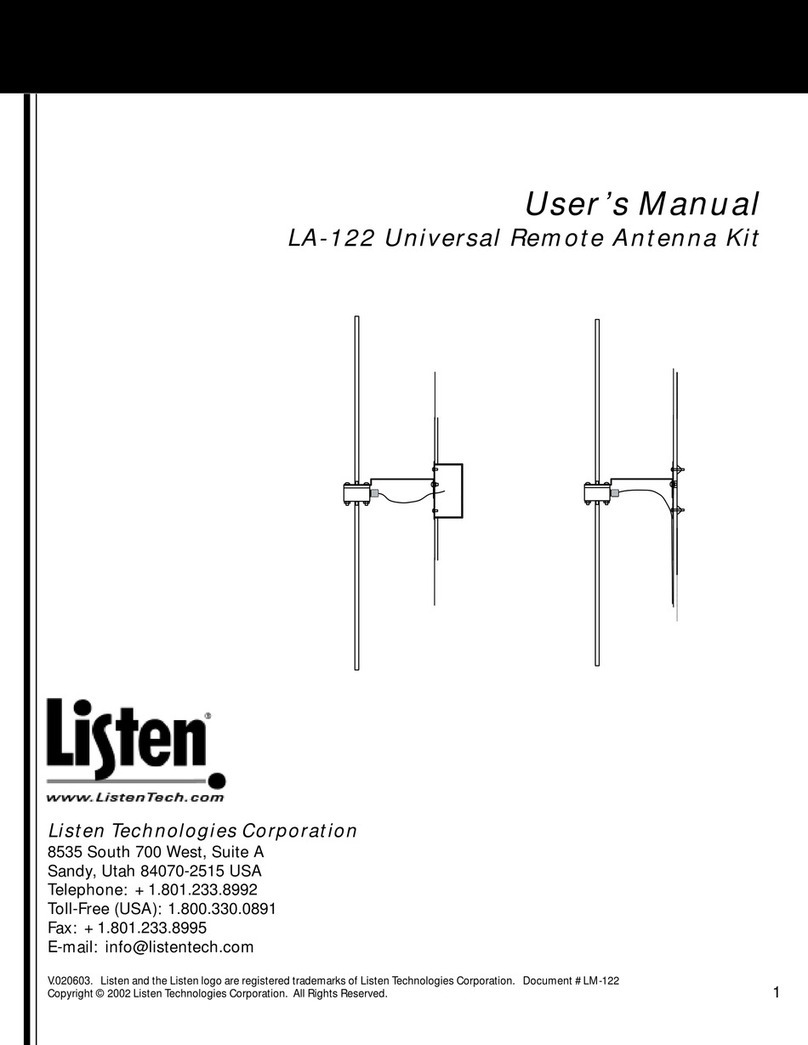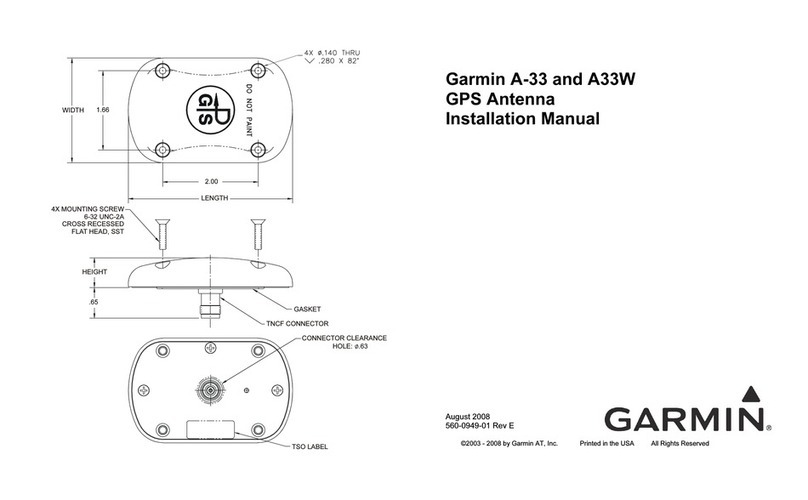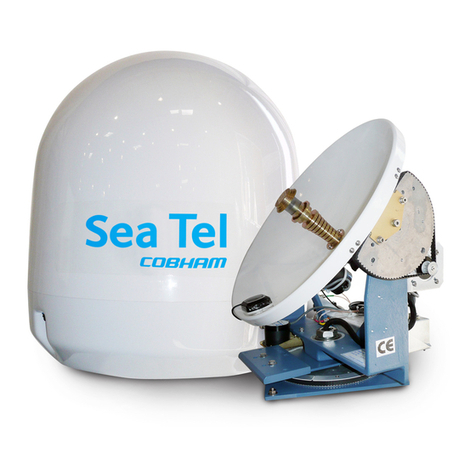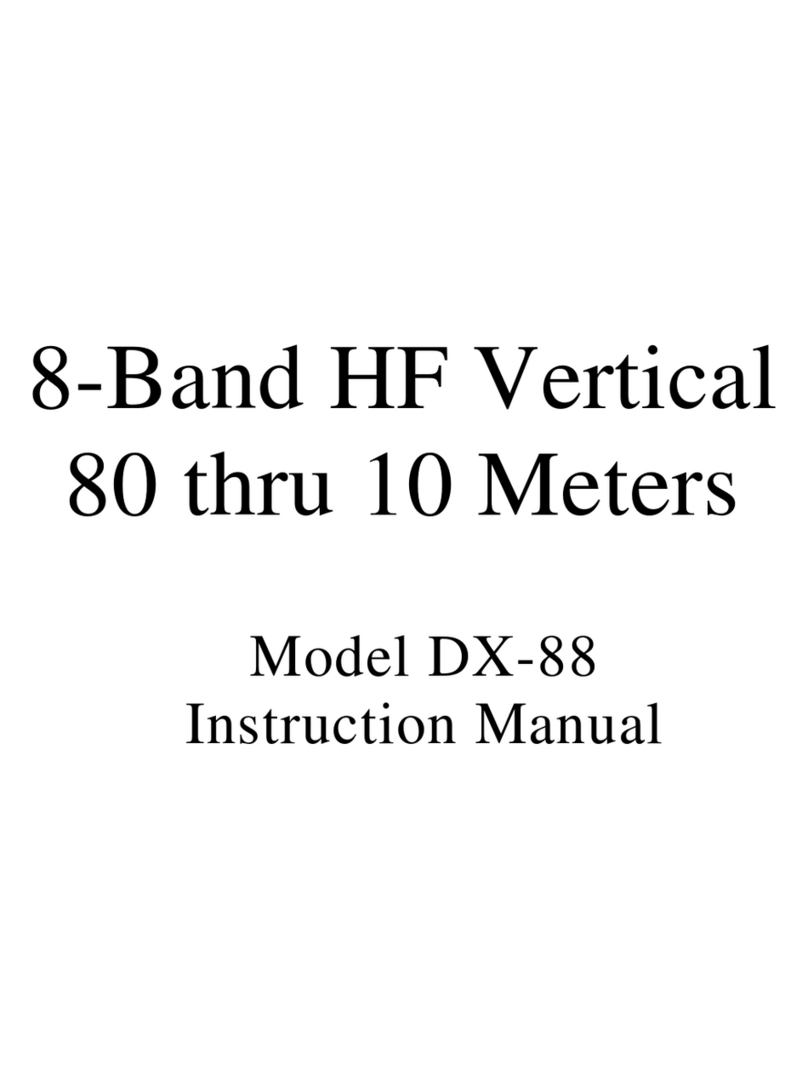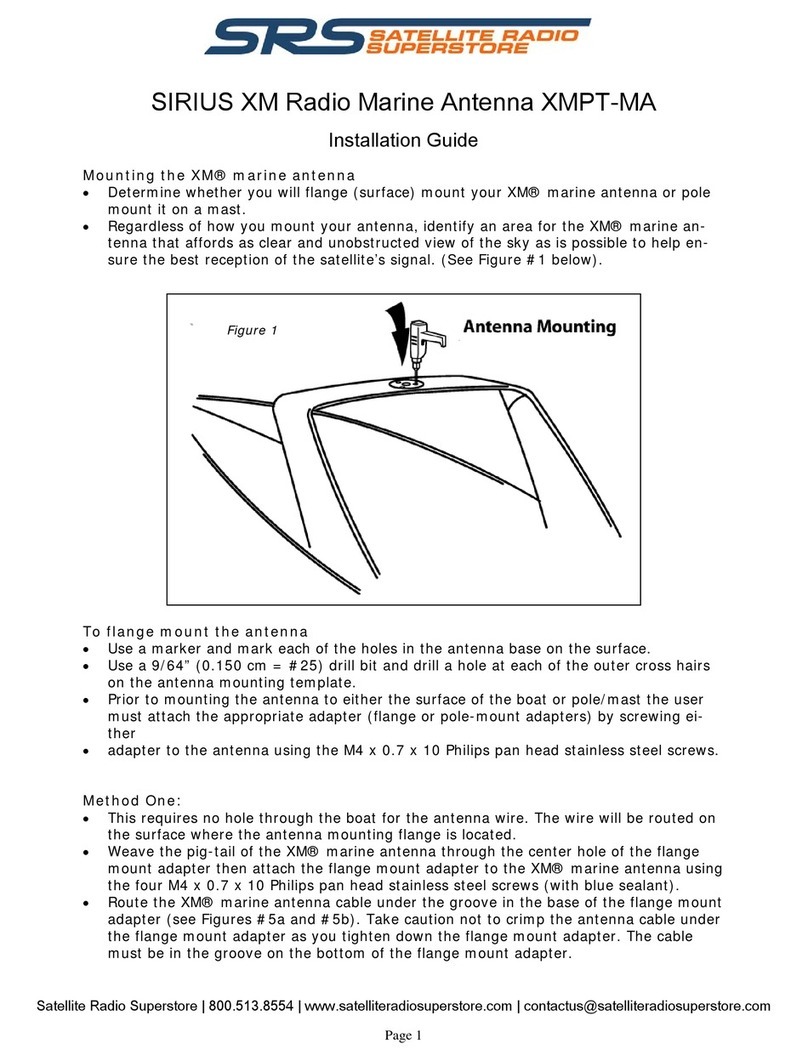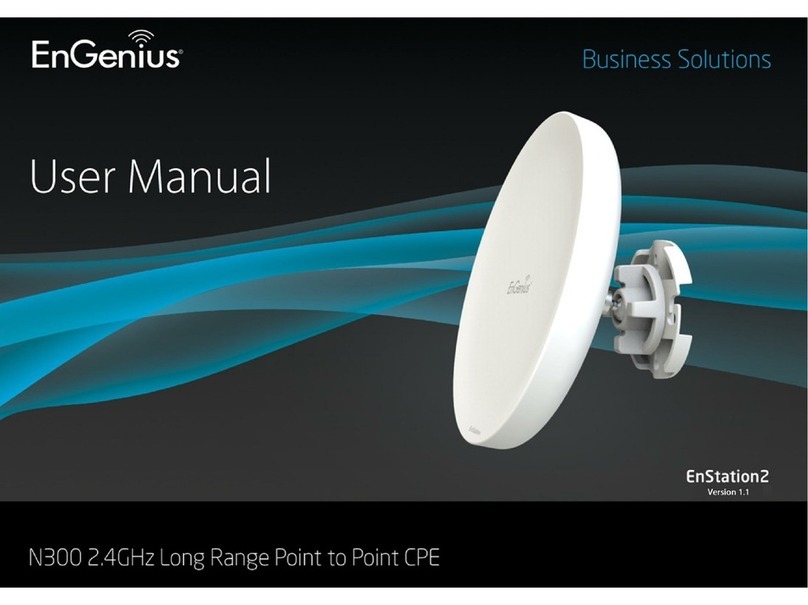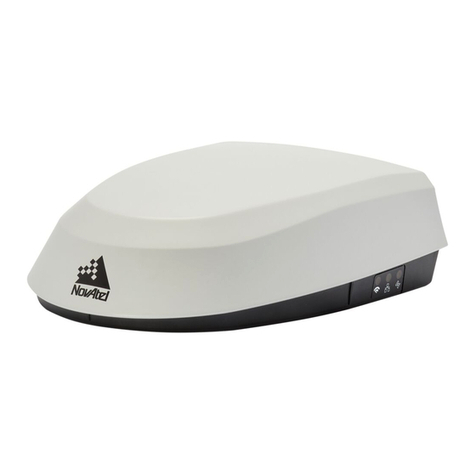2. Mount the Antenna
Find a convenient indoor location to mount your antenna, then set up the channels using the
following "Scan the TV for Channels" steps below.
Note: Test your antenna location after scanning for channels and before nal mounting with the 3M
mounting stickers. In some instances, you may decide to relocate the antenna for better reception.
See“Antenna Placement Options and Tips”below.
If you do not want to mount the antenna to the wall or to a window, you can use the included stand
for convenient desk or tabletop placement.
3. Scan the TV for Channels
A. In the TV’s setup menu, set the mode to Antenna or Air. Refer to theTV manual for detailed
instructions.
B. While in the TV’s setup menu, set TV to scan for channels. This can sometimes be listed as
auto-program, channel search or channel scan. Consult your TV manual for detailed instructions.
Antenna Placement Options and Tips
TV reception and quality depends on the distance from the transmitting tower to your home.
Surrounding environments may also aect signal strength and reception.
If your reception is sporadic or needs to be improved, try the helpful tips below:
1. Placing the antenna in a higher location may result in better reception.
2. Facing the antenna towards the broadcast tower may result in better reception.
3. Placing the antenna close to or on a window may also result in better reception.
Important:
Always re-scan for channels whenever you move your antenna.
Frequently Asked Questions
How many channels can I receive?
The number of channels you can receive will be determined by what is being broadcast in your area.
Channel reception will vary from location to location based on terrain (including trees, buildings,
hills and mountains). The fewer obstructions, the better your chance of receiving strong digital
signals. Go to http://dtv.gov/maps. Enter your address for a listing of likely channels available in
your area.
Do I need to use an External Amplier?
An amplier can enhance signals weakened by obstructions between you and the broadcast towers.
If your TV picture is not crystal clear, or you are unable get strong signals from distant towers, you
can use the amplier to boost the weakened signals.
Note: We do NOT recommend using the amplier if your house is very close to the broadcast tower
and the signal is already very strong. A booster will cause self-oscillation and you may actually end
up getting fewer signals than without it.
Will all the channels I receive be High Denition (HD)?
Not all digital signals are High Denition (HD). Make sure you are using a High Denition Television
(HDTV) with built in ATSC tuner. When connecting the antenna to a third-party receiver, make sure it
is capable of receiving HD. Otherwise no HD channels can be picked up.
里面
Connect the 10ft coaxial cable to the ANT/IN or CABLE IN port on the back of your
TV. Note: For TV’s that require a tuner box, connect the coaxial cable to the tuner
box's ANT/IN or CABLE IN port.
See the “Final Conguration” Illustrations Below for
Both Connection Options
Back of TV
From 10ft
Coaxial Cable
ANT/IN
CABLE IN
ANT/IN
When connected to HDTV with built in digital tuner
Digital
Antenna
HDTV
When connected through a digital converter box.
Digital Converter Box
Digital
Antenna
Traditional TV
1. Connect the Antenna on the Back of Your TV
1
2
